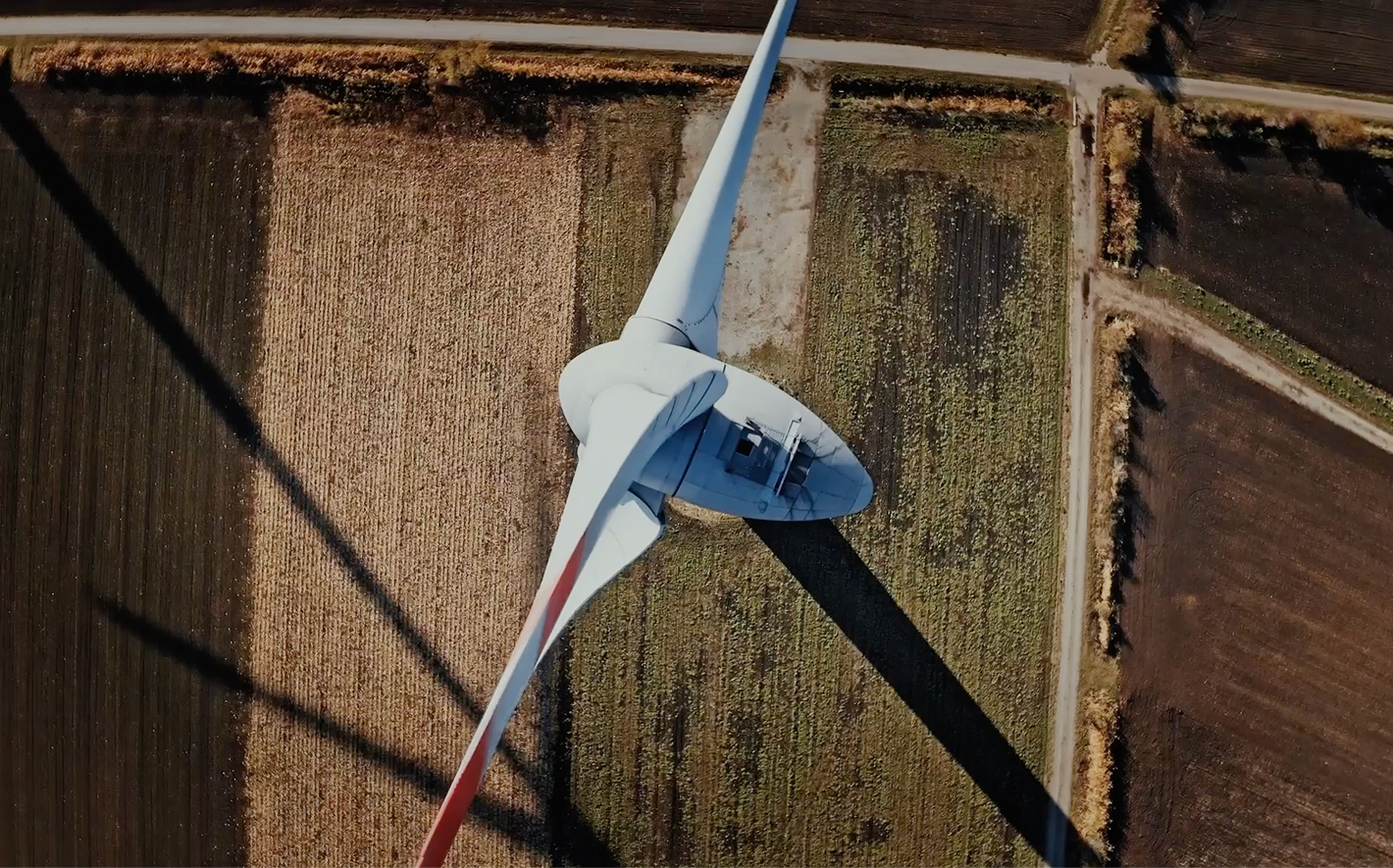Where soil meets serious science
What used to take months of academic research, we now do in days.
Determining every microorganism in a soil sample was once too complex and expensive for practical use. High-throughput sequencing changed that. Now, at Soilytix, we have refined this process and can map the entire soil microbiome quickly, accurately, and affordably.
.png)
Three Dimensions of Soil Analysis
Soil can be analyzed in terms of physical, chemical, and biological parameters. While testing physical and chemical soil parameters is well established in the agricultural industry, their results only reveal a part of the whole picture. To truly understand how soil functions, biological analysis is essential: it uncovers the activity of soil organisms that drive nutrient cycling, improve structure, and support plant health; factors invisible to purely chemical or physical tests.

Analysis Portfolio
Individual Assays

Custom Package
Custom selection
Choose any combination of assays from our full portfolio to suit your specific needs. Our team can advise on the best combination for your research or monitoring goals.
Fully tailored analysis
Mix and match assays across all categories – from DNA-based metabarcoding to chemical, physical, and biological soil analyses.
Expert guidance
We help design a sampling and testing strategy that answers your exact questions, ensuring relevant, reliable, and actionable results.

Metabarcoding (Mix & Match)
Mix and match from our metabarcoding portfolio.
bacteria & archaea (16S)
Metabarcoding to analyze the composition and abundance of prokaryotic (bacteria & archaea) communities.
fungi (ITS)
Metabarcoding to analyze the composition and abundance of fungal communities.
mesofauna (18S)
Metabarcoding to analyze the composition of nematode and arthropod communities.
earthworms (m16S)
Metabarcoding to analyze the composition of earthworm and enchytraeid communities.
pan-eukaryota (18S V9)
Metabarcoding to analyze the composition of eukaryotic (fungi, protist, mesofauna, plant) communities.
vertebrates (m12S)
Metabarcoding to analyze the composition of vertebrates (animals with a backbone; e.g. mammals, birds, reptiles, fish) communities.
mammals (m16S)
Metabarcoding to analyze the composition of mammal communities.

MySoilMicrobes +
bacteria & archaea (16S)
Metabarcoding to analyze the composition and abundance of prokaryotic (bacteria & archaea) communities.
fungi (ITS)
Metabarcoding to analyze the composition and abundance of fungal communities.
pH
Measurement of pH according to ISO 10390:2021.
soil organic matter
Analysis to assess the amount of organic matter in soil using loss-on-ignition. To account for the effects of soil texture on loss-on-ignition, we highly recommend additionally measuring soil texture, and applying a clay-correction factor.
soil nutrient analysis
Measurement of macro- and micro-nutrients in soil, as well as the CN-ratio.

MySoilMicrobes
bacteria & archaea (16S)
Metabarcoding to analyze the composition and abundance of prokaryotic (bacteria & archaea) communities.
fungi (ITS)
Metabarcoding to analyze the composition and abundance of fungal communities.

Full package
bacteria & archaea (16S)
Metabarcoding to analyze the composition and abundance of prokaryotic (bacteria & archaea) communities.
fungi (ITS)
Metabarcoding to analyze the composition and abundance of fungal communities.
mesofauna (18S)
Metabarcoding to analyze the composition of nematode and arthropod communities.
earthworms (m16S)
Metabarcoding to analyze the composition of earthworm and enchytraeid communities.
ß-glucosidase (BG)
Enzyme assay to measure the substrate conversion rate of the enzyme ß-glucosidase (BG), which is important for cellulose degradation - a major compound of plant litter. BG is critical for carbon availability.
acid phosphatase (AP)
Enzyme assay to measure the substrate conversion rate of the acid phosphate (AP), which is important for the release of phosphorus from litter. AP is critical for phosphorus availability.
N-acetyl-glucosaminidase (NAG)
Enzyme assay to measure the substrate conversion rate of the enzyme N-acetyl-glucosaminidase (NAG), which is important for chitin degradation - a major compound of the cell wall of fungi and the exoskeleton of arthropods. NAG is critical for nitrogen availability.
leucine aminopeptidase (LAP)
Enzyme assay to measure the substrate conversion rate of the enzyme leucine aminopeptidas (LAP), which is important for degradation of proteins and peptides. LAP is critical for nitrogen availability.
ß-xylosidase (BXY)
Enzyme assay to measure the substrate conversion rate of the enzyme ß-xylosidase (BXY), which is important for degradation of hemicellulose - a major component of plant litter. BXY is critical for carbon availability.
arylsulfatase (ASU)
Enzyme assay to measure the substrate conversion rate of the enzyme arylsulfatase (ASU), which is important for sulfur acquisition.
polyphenol oxidase (PPO)
Enzyme assay to measure the substrate conversion rate of the enzyme polyphenol oxidase (PPO), which is important for degradation of lignin and polyphenols - major components of plant litter. PPO is critical for carbon availability.
soil respiration
Measures the amount of carbon dioxide respired by soil microbes as an indicator for microbial activity according to ISO 16072:2011.
soil particle size distribution
Laser diffraction-based analysis to measure the fractions of clay, silt, and sand, respectively, also known as soil texture.
pH
Measurement of pH according to ISO 10390:2021.
soil organic matter
Analysis to assess the amount of organic matter in soil using loss-on-ignition. To account for the effects of soil texture on loss-on-ignition, we highly recommend additionally measuring soil texture, and applying a clay-correction factor.
soil nutrient analysis
Measurement of macro- and micro-nutrients in soil, as well as the CN-ratio.

Enzymes +
ß-glucosidase (BG)
Enzyme assay to measure the substrate conversion rate of the enzyme ß-glucosidase (BG), which is important for cellulose degradation - a major compound of plant litter. BG is critical for carbon availability.
acid phosphatase (AP)
Enzyme assay to measure the substrate conversion rate of the acid phosphate (AP), which is important for the release of phosphorus from litter. AP is critical for phosphorus availability.
N-acetyl-glucosaminidase (NAG)
Enzyme assay to measure the substrate conversion rate of the enzyme N-acetyl-glucosaminidase (NAG), which is important for chitin degradation - a major compound of the cell wall of fungi and the exoskeleton of arthropods. NAG is critical for nitrogen availability.
leucine aminopeptidase (LAP)
Enzyme assay to measure the substrate conversion rate of the enzyme leucine aminopeptidas (LAP), which is important for degradation of proteins and peptides. LAP is critical for nitrogen availability.
ß-xylosidase (BXY)
Enzyme assay to measure the substrate conversion rate of the enzyme ß-xylosidase (BXY), which is important for degradation of hemicellulose - a major component of plant litter. BXY is critical for carbon availability.
arylsulfatase (ASU)
Enzyme assay to measure the substrate conversion rate of the enzyme arylsulfatase (ASU), which is important for sulfur acquisition.
polyphenol oxidase (PPO)
Enzyme assay to measure the substrate conversion rate of the enzyme polyphenol oxidase (PPO), which is important for degradation of lignin and polyphenols - major components of plant litter. PPO is critical for carbon availability.
soil particle size distribution
Laser diffraction-based analysis to measure the fractions of clay, silt, and sand, respectively, also known as soil texture.
pH
Measurement of pH according to ISO 10390:2021.
soil organic matter
Analysis to assess the amount of organic matter in soil using loss-on-ignition. To account for the effects of soil texture on loss-on-ignition, we highly recommend additionally measuring soil texture, and applying a clay-correction factor.

MySoil360 +
bacteria & archaea (16S)
Metabarcoding to analyze the composition and abundance of prokaryotic (bacteria & archaea) communities.
fungi (ITS)
Metabarcoding to analyze the composition and abundance of fungal communities.
mesofauna (18S)
Metabarcoding to analyze the composition of nematode and arthropod communities.
soil particle size distribution
Laser diffraction-based analysis to measure the fractions of clay, silt, and sand, respectively, also known as soil texture.
pH
Measurement of pH according to ISO 10390:2021.
soil organic matter
Analysis to assess the amount of organic matter in soil using loss-on-ignition. To account for the effects of soil texture on loss-on-ignition, we highly recommend additionally measuring soil texture, and applying a clay-correction factor.

MySoilMicrobes +
bacteria & archaea (16S)
Metabarcoding to analyze the composition and abundance of prokaryotic (bacteria & archaea) communities.
fungi (ITS)
Metabarcoding to analyze the composition and abundance of fungal communities.
soil particle size distribution
Laser diffraction-based analysis to measure the fractions of clay, silt, and sand, respectively, also known as soil texture.
pH
Measurement of pH according to ISO 10390:2021.
soil organic matter
Analysis to assess the amount of organic matter in soil using loss-on-ignition. To account for the effects of soil texture on loss-on-ignition, we highly recommend additionally measuring soil texture, and applying a clay-correction factor.

Enzymes
ß-glucosidase (BG)
Enzyme assay to measure the substrate conversion rate of the enzyme ß-glucosidase (BG), which is important for cellulose degradation - a major compound of plant litter. BG is critical for carbon availability.
acid phosphatase (AP)
Enzyme assay to measure the substrate conversion rate of the acid phosphate (AP), which is important for the release of phosphorus from litter. AP is critical for phosphorus availability.
N-acetyl-glucosaminidase (NAG)
Enzyme assay to measure the substrate conversion rate of the enzyme N-acetyl-glucosaminidase (NAG), which is important for chitin degradation - a major compound of the cell wall of fungi and the exoskeleton of arthropods. NAG is critical for nitrogen availability.
leucine aminopeptidase (LAP)
Enzyme assay to measure the substrate conversion rate of the enzyme leucine aminopeptidas (LAP), which is important for degradation of proteins and peptides. LAP is critical for nitrogen availability.
ß-xylosidase (BXY)
Enzyme assay to measure the substrate conversion rate of the enzyme ß-xylosidase (BXY), which is important for degradation of hemicellulose - a major component of plant litter. BXY is critical for carbon availability.
arylsulfatase (ASU)
Enzyme assay to measure the substrate conversion rate of the enzyme arylsulfatase (ASU), which is important for sulfur acquisition.
polyphenol oxidase (PPO)
Enzyme assay to measure the substrate conversion rate of the enzyme polyphenol oxidase (PPO), which is important for degradation of lignin and polyphenols - major components of plant litter. PPO is critical for carbon availability.

MySoil360
bacteria & archaea (16S)
Metabarcoding to analyze the composition and abundance of prokaryotic (bacteria & archaea) communities.
fungi (ITS)
Metabarcoding to analyze the composition and abundance of fungal communities.
mesofauna (18S)
Metabarcoding to analyze the composition of nematode and arthropod communities.

MySoilMicrobes
bacteria & archaea (16S)
Metabarcoding to analyze the composition and abundance of prokaryotic (bacteria & archaea) communities.
fungi (ITS)
Metabarcoding to analyze the composition and abundance of fungal communities.

SoilProperties +
soil particle size distribution
Laser diffraction-based analysis to measure the fractions of clay, silt, and sand, respectively, also known as soil texture.
pH
Measurement of pH according to ISO 10390:2021.
soil organic matter
Analysis to assess the amount of organic matter in soil using loss-on-ignition. To account for the effects of soil texture on loss-on-ignition, we highly recommend additionally measuring soil texture, and applying a clay-correction factor.
soil nutrient analysis
Measurement of macro- and micro-nutrients in soil, as well as the CN-ratio.

SoilProperties Basic
soil particle size distribution
Laser diffraction-based analysis to measure the fractions of clay, silt, and sand, respectively, also known as soil texture.
pH
Measurement of pH according to ISO 10390:2021.
soil organic matter
Analysis to assess the amount of organic matter in soil using loss-on-ignition. To account for the effects of soil texture on loss-on-ignition, we highly recommend additionally measuring soil texture, and applying a clay-correction factor.

Custom Analyses
Please contact us

soil nutrient analysis
Measurement of macro- and micro-nutrients in soil, as well as the CN-ratio.

soil organic matter
Analysis to assess the amount of organic matter in soil using loss-on-ignition. To account for the effects of soil texture on loss-on-ignition, we highly recommend additionally measuring soil texture, and applying a clay-correction factor.

PH
Measurement of pH according to ISO 10390:2021.

soil particle size distribution
Laser diffraction-based analysis to measure the fractions of clay, silt, and sand, respectively, also known as soil texture.

soil respiration
Measures the amount of carbon dioxide respired by soil microbes as an indicator for microbial activity according to ISO 16072:2011.

polyphenol oxidase (PPO)
Enzyme assay to measure the substrate conversion rate of the enzyme polyphenol oxidase (PPO), which is important for degradation of lignin and polyphenols - major components of plant litter. PPO is critical for carbon availability.

arylsulfatase (ASU)
Enzyme assay to measure the substrate conversion rate of the enzyme arylsulfatase (ASU), which is important for sulfur acquisition.

ß-xylosidase (BXY)
Enzyme assay to measure the substrate conversion rate of the enzyme ß-xylosidase (BXY), which is important for degradation of hemicellulose - a major component of plant litter. BXY is critical for carbon availability.

leucine aminopeptidase (LAP)
Enzyme assay to measure the substrate conversion rate of the enzyme leucine aminopeptidas (LAP), which is important for degradation of proteins and peptides. LAP is critical for nitrogen availability.

N-acetyl-glucosaminidase (NAG)
Enzyme assay to measure the substrate conversion rate of the enzyme N-acetyl-glucosaminidase (NAG), which is important for chitin degradation - a major compound of the cell wall of fungi and the exoskeleton of arthropods. NAG is critical for nitrogen availability.

acid phosphatase (AP)
Enzyme assay to measure the substrate conversion rate of the acid phosphate (AP), which is important for the release of phosphorus from litter. AP is critical for phosphorus availability.

ß-glucosidase (BG)
Enzyme assay to measure the substrate conversion rate of the enzyme ß-glucosidase (BG), which is important for cellulose degradation - a major compound of plant litter. BG is critical for carbon availability.

mammals (m16S)
Metabarcoding to analyze the composition of mammal communities.

vertebrates (m12S)
Metabarcoding to analyze the composition of vertebrates (animals with a backbone; e.g. mammals, birds, reptiles, fish) communities.

pan-eukaryota (18S V9)
Metabarcoding to analyze the composition of eukaryotic (fungi, protist, mesofauna, plant) communities.

earthworms (m16S)
Metabarcoding to analyze the composition of earthworm and enchytraeid communities.

mesofauna (18S)
Metabarcoding to analyze the composition of nematode and arthropod communities.

fungi (ITS)
Metabarcoding to analyze the composition and abundance of fungal communities.

bacteria & archaea (16S)
Metabarcoding to analyze the composition and abundance of prokaryotic (bacteria & archaea) communities.

.svg)
.svg)



